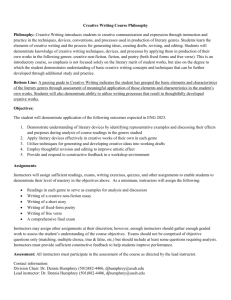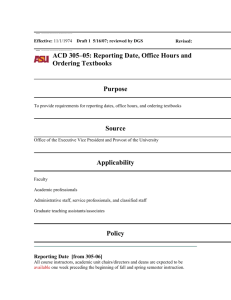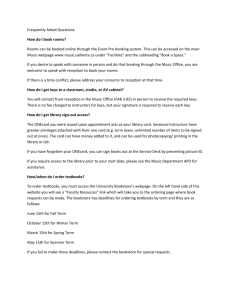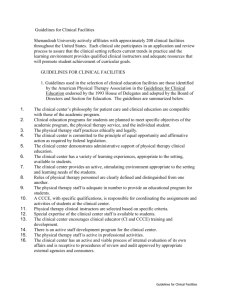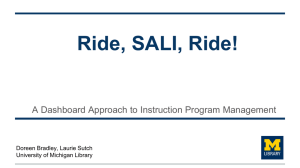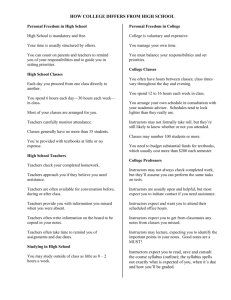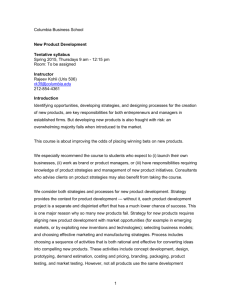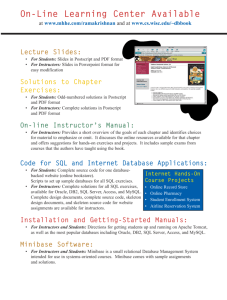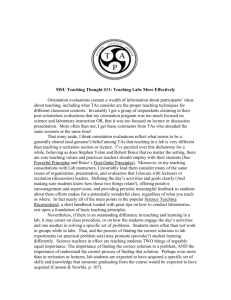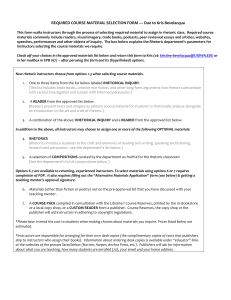process - Long Beach City College
advertisement
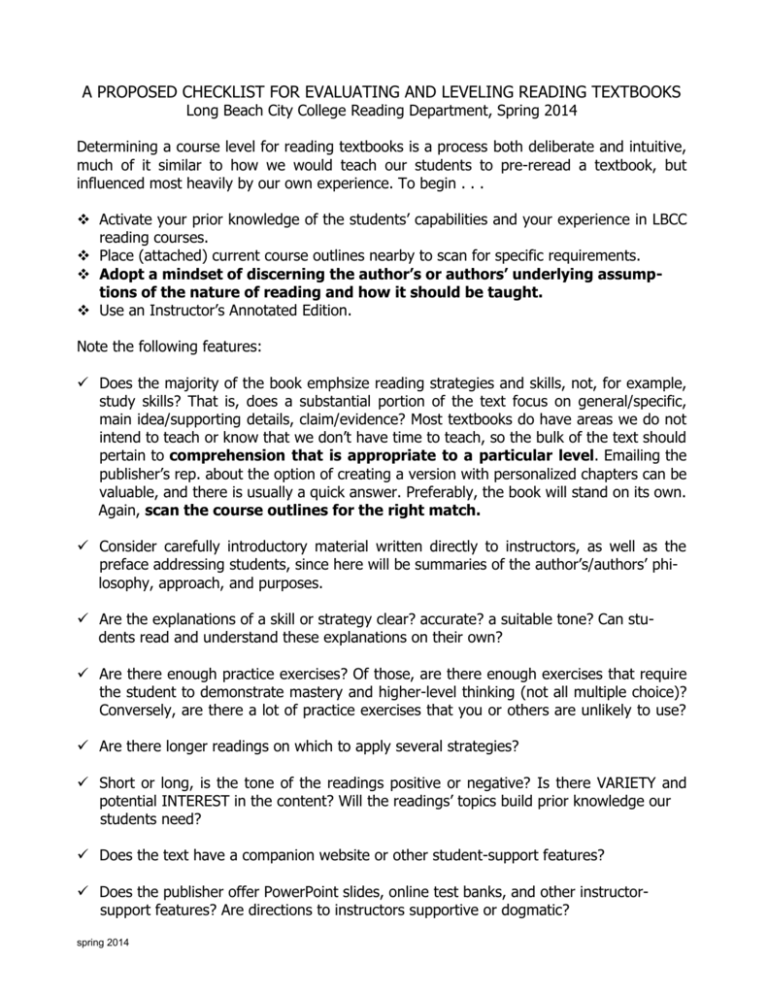
A PROPOSED CHECKLIST FOR EVALUATING AND LEVELING READING TEXTBOOKS Long Beach City College Reading Department, Spring 2014 Determining a course level for reading textbooks is a process both deliberate and intuitive, much of it similar to how we would teach our students to pre-reread a textbook, but influenced most heavily by our own experience. To begin . . . Activate your prior knowledge of the students’ capabilities and your experience in LBCC reading courses. Place (attached) current course outlines nearby to scan for specific requirements. Adopt a mindset of discerning the author’s or authors’ underlying assumptions of the nature of reading and how it should be taught. Use an Instructor’s Annotated Edition. Note the following features: Does the majority of the book emphsize reading strategies and skills, not, for example, study skills? That is, does a substantial portion of the text focus on general/specific, main idea/supporting details, claim/evidence? Most textbooks do have areas we do not intend to teach or know that we don’t have time to teach, so the bulk of the text should pertain to comprehension that is appropriate to a particular level. Emailing the publisher’s rep. about the option of creating a version with personalized chapters can be valuable, and there is usually a quick answer. Preferably, the book will stand on its own. Again, scan the course outlines for the right match. Consider carefully introductory material written directly to instructors, as well as the preface addressing students, since here will be summaries of the author’s/authors’ philosophy, approach, and purposes. Are the explanations of a skill or strategy clear? accurate? a suitable tone? Can students read and understand these explanations on their own? Are there enough practice exercises? Of those, are there enough exercises that require the student to demonstrate mastery and higher-level thinking (not all multiple choice)? Conversely, are there a lot of practice exercises that you or others are unlikely to use? Are there longer readings on which to apply several strategies? Short or long, is the tone of the readings positive or negative? Is there VARIETY and potential INTEREST in the content? Will the readings’ topics build prior knowledge our students need? Does the text have a companion website or other student-support features? Does the publisher offer PowerPoint slides, online test banks, and other instructorsupport features? Are directions to instructors supportive or dogmatic? spring 2014 All of the above can be done alone or collaboratively, but, ultimately, we want to answer the questions, “Are the passages written at an appropriate level for the course?” “Is this book written in a manner consistent with the philosophy of balance?” These questions are best answered in conversation with other experienced LBCC instructors. The publisher may have suggested a level, but it will not necessarily correspond with ours. Numerous readability formulas are available and can be valuable, but once people see a number, it tends to dominate the decision. The synergy of instructors’ collective experience should be the controlling influence in the final course-level determination. To experiment with this method of evaluation, we decided that the book should be checked by at least four full-time reading faculty members. Therefore, check it, make your recommendation, and move it forward. The last person can then bring it to a department meeting with the findings. NAME SUGGESTED LEVEL COMMENTS 1. 2. 3. 4. SPRING 2014 2
